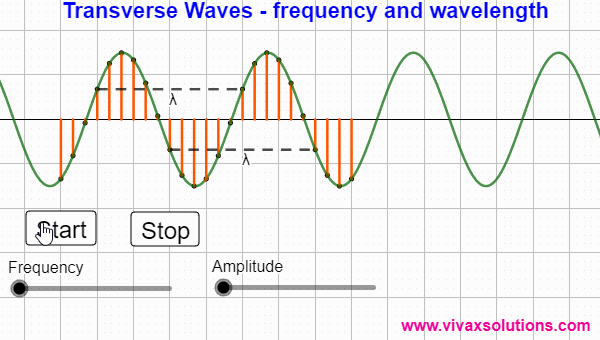Waves
A wave carries energy from a point to another point in a medium / vacuum without the movement of the particles along with it.
In the above animation, the wave moves from the left to the right; the particles, however, just vibrate vertically without moving along with the wave.
Transverse Waves
If the direction of the wave is perpendicular to the vibration of particles, it is called a transverse wave.
E.g.
Water waves, radio waves, microwaves
Amplitude
The maximum displacement of a particle in a wave is called amplitude.
Intensity / loudness
The intensity / loudness of a wave is proportional to the square of the amplitude.
The greater the amplitude, the greater the intensity / loudness.
Amplifier
This is what an amplifier does: it increases the amplitude of an input signal, which in turn leads to the increased loudness or intensity.
Frequency - f
The number of cycles of a wave that passes through a point in a unit time is called frequency.
Wavelength - λ
The distance between two peaks or two troughs is called the wavelength.
It is the length of a cycle too.
Wave Equation
The formula that connects the speed, frequency and wave length is called the wave equation.
speed = distance travelled in 1 second
= number of cycles per second x length of a cycle
= frequency x wavelength
speed = frequency x wavelength
v = fλ
Speed of sound in air = 320 m/s
Speed of radio waves = 3x108 m/s
You can practise the above with the following simulator:






0 comments:
Post a Comment